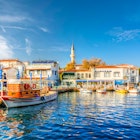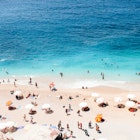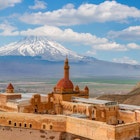
Jul 1, 2025 • 6 min read
From hiking the Carian Trail to marveling at ancient ruins to savoring flavorful cuisine, Carian Türkiye is sure to bring you a special experience.

Jul 1, 2025 • 6 min read
From hiking the Carian Trail to marveling at ancient ruins to savoring flavorful cuisine, Carian Türkiye is sure to bring you a special experience.

Jun 19, 2025 • 4 min read
Let three of our Turkish experts show you the local spots to bookmark for 2025's summer vacation in Türkiye.

Mar 3, 2025 • 10 min read
In four itineraries for Türkiye, travelers can discover the country's ancient ruins, enticing markets, fairy-tale terrain and sparkling coastline.

Feb 18, 2025 • 6 min read
With its beaches, mountains, deserts and megacities, Türkiye has something to offer travelers in all seasons. Here’s a full guide on just when to visit.

Jan 29, 2025 • 9 min read
Turkish coffee is a unique style of preparation with its own history, preparation and flavor. Here's how to experience it at the source.

Jan 21, 2025 • 7 min read
From classical cities to archaeological marvels, Türkiye has an incredibly rich variety of ancient human sites. These are 12 of the best.

Dec 4, 2024 • 7 min read
Magnificent cities, blissful beaches, ancient history, unspoiled nature... Here is our pick of the best places to visit in Türkiye (Turkey).

Dec 4, 2024 • 9 min read
With its history-soaked cities, spectacular landscapes and rich heritage, Turkey has something for every type of traveler. Here are the top things to do.

Dec 4, 2024 • 6 min read
Stay fully connected on your next trip to Türkiye with this guide to local wi-fi networks, roaming charges, eSIMs and data.

Jul 29, 2024 • 6 min read
The small eastern Black Sea cities of Giresun and Ordu in Türkiye are gateways to mountain villages, canyons and waterfalls.

Jul 9, 2024 • 7 min read
With nearly 8000km of coastline and an incredibly diverse landscape, exploring Türkiye on a road trip is a delight. Here are 8 of our favorites.

May 21, 2024 • 4 min read
Türkiye's culinary richness is the stuff of legend – and so are its cheeses. Dive into the wonderful world of these varied cultures (get it?).

May 9, 2024 • 5 min read
In 2023 two earthquakes rocked southeastern Turkey, killing thousands of people and displacing millions. Here's the latest on tourism in the region.

Nov 4, 2021 • 4 min read
From the turquoise waters of the Mediterranean to the rugged, rocky shores of the Black Sea, Turkey abounds in beaches along its coasts.

Sep 25, 2021 • 2 min read
From visa costs to rules around cruise passengers, our guide to Turkey’s entry requirements covers everything you need to know before visiting the country.

Mar 9, 2020 • 6 min read
There are a dazzling array of delights awaiting you in Turkey. Make your visit fun without being overwhelming with a Lonely Planet Experiences tour led by a…

Oct 23, 2019 • 5 min read
The Dogu – or Eastern – Express train runs almost a thousand miles from the east to the west of Turkey. Here's our guide to this scenic journey.

Oct 16, 2019 • 5 min read
Reality stars the Kardashians can trace their roots to an Armenian kingdom deep in the heart of eastern Turkey. Find out how to explore this exotic land.

Jul 22, 2019 • 6 min read
A week at an all-inclusive resort promises idle, sunny days but it doesn’t usually spell adventure. After all, where’s the thrill of exploration when…

Feb 20, 2019 • 6 min read
Along Turkey’s scenic and serene Aegean coast, chefs, winemakers and food producers are reviving old flavours and cultivating new tastes. Less than an…